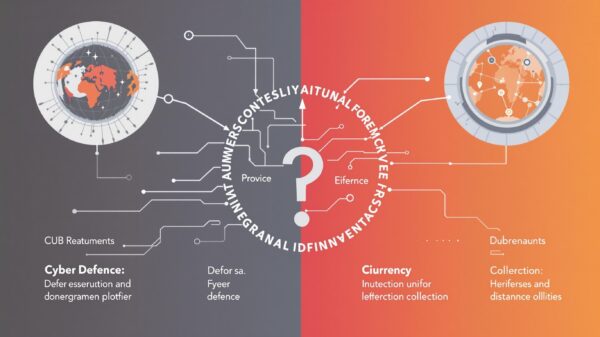Social engineering stands out for its unique reliance on the most unpredictable variable of all: human psychology. This article peels back the layers of social engineering, exploring its tactics, implications, and defences, all while engaging you, the reader, in a journey through the human aspects of security.
Understanding Social Engineering
The Basics of Human Hacking
Social engineering fundamentally involves manipulating individuals into divulging confidential information or performing actions that may compromise personal or organizational security. But what makes it so effective? It’s the hackers’ deep understanding of human behavior and social dynamics that allows them to exploit the inherent trust and sometimes naivety in human interactions.
The Psychology Behind the Con
Have you ever wondered why people fall for social engineering tricks? It’s because these schemes often play on emotions like fear, urgency, or even greed. By pushing the right psychological buttons, social engineers can bypass the logical safeguards most individuals would typically have in place.
The Faces of Social Engineering
Phishing: The Bait of Cyber Tricksters
Phishing is a term you’ve likely encountered. It’s a form of social engineering where attackers send fraudulent communication, often an email, masquerading as a trustworthy entity. The goal? To lure individuals into providing sensitive data such as login credentials or credit card numbers. It’s a deceitful dance that plays out in inboxes worldwide.
Vishing and Smishing: Beyond the Inbox
Away from the digital screens, vishing (voice phishing) and smishing (SMS phishing) are two other social engineering tactics that leverage phone calls and text messages, respectively. These methods are particularly insidious as they exploit the personal touch of a human voice or the perceived intimacy of a text message, making the deceit feel all the more real.

The Art of Pretexting
Crafting a Convincing Backstory
Pretexting is a step beyond the basic phishing attempt. It involves fabricating scenarios and identities to obtain information. Attackers may pose as co-workers, bank officials, or anyone who can plausibly request sensitive information. The devil is truly in the details, with the con artist’s success hinging on how believable their story is.
The Role of Research
To craft a convincing pretext, social engineers often conduct thorough research on their targets. They scour social media profiles, company websites, and any public records to piece together information that makes their ruse all the more credible. It’s a testament to the lengths these manipulators will go to achieve their ends.
Tailgating and Piggybacking: Physical Breaches
The Unauthorized Plus-One
Not all social engineering occurs at a digital distance. Tailgating involves following someone with authorized access into a restricted area. It’s the human equivalent of sneaking in through a door before it closes, and it takes advantage of our often unconscious desire to be polite and hold the door for others.
The Dangers of Polite Compliance
Piggybacking, a variation of tailgating, occurs when an attacker asks the employee to let them in, perhaps spinning a tale of a forgotten access card. It’s amazing how simple human courtesy can become a security vulnerability when manipulated by a skilled social engineer.
The Impact of Social Engineering
Personal and Organizational Risks
The consequences of falling prey to social engineering can be dire. For individuals, it can mean identity theft, financial loss, and emotional distress. For organizations, the stakes are even higher, with potential for massive data breaches, financial damage, and a tarnished reputation that can take years to mend.
A Chain Reaction of Compromise
One successful social engineering attack can initiate a cascade of breaches within an organization. Compromised credentials can provide a foothold for attackers to move laterally through a network, accessing sensitive data and systems. It’s a ripple effect that underscores the importance of vigilance at every level.

Prevention and Protection Strategies
Educating the Human Firewall
The first line of defense against social engineering is awareness and education. Regular training sessions can help individuals recognize and respond to social engineering tactics. After all, knowledge is power, and in this context, it’s the power to protect oneself and one’s organization.
Implementing Robust Security Protocols
Beyond education, robust security protocols are essential. This includes everything from strong password policies to multi-factor authentication. By adding layers of technical defenses, organizations can reduce the success rate of social engineering attacks.
Legal and Ethical Considerations
The Thin Line of Social Engineering Ethics
While social engineering is often associated with malicious intent, it’s also used legitimately in penetration testing to assess an organization’s security posture. However, this raises ethical questions about consent and deception, even when the end goal is to improve security.
Navigating the Legal Landscape
Legally, social engineering can fall under fraud or identity theft statutes, but the nuances of the law can be complex. As technology and tactics evolve, so too must the legal frameworks that govern them, ensuring that those who engage in malicious social engineering face appropriate consequences.
Social Engineering in the Digital Age
The Evolution of Tactics
Social engineering tactics are constantly evolving, adapting to new technologies and communication channels. As we become more interconnected through social media and other digital platforms, the opportunities for social engineers multiply. Staying informed about these evolving threats is crucial.
The Role of Artificial Intelligence
Artificial intelligence (AI) and machine learning present new frontiers for both perpetrating and combating social engineering. AI can be used to craft more convincing phishing emails or tailor attacks based on an individual’s online behavior. Conversely, it can also be employed to detect and prevent such threats.

Future-Proofing Against Social Engineering
Embracing Continuous Learning
The fight against social engineering is ongoing, and it requires a commitment to continuous learning. As new tactics emerge, so must new defenses. This includes staying abreast of the latest security technologies and understanding the ever-changing human dynamics at play.
Fostering a Security-Conscious Culture
Ultimately, building a security-conscious culture within organizations and among individuals is a powerful deterrent against social engineering. When security becomes everyone’s responsibility, the collective vigilance can serve as a formidable barrier against these deceptive attacks.
Conclusion
Social engineering exploits the most basic of human interactions and trust, turning our social norms into vulnerabilities. It’s a reminder that in the digital world, our security is only as strong as our awareness and readiness to question what may seem like routine requests for information. By staying informed, fostering a culture of security, and implementing strong technical defenses, we can build resilience against the manipulative tactics of social engineers.
To further enhance your understanding, let’s explore some frequently asked questions about social engineering.
Social engineering can occur both in person and online. Tactics like tailgating and pretexting can involve face-to-face interactions, while phishing, vishing, and smishing primarily occur through digital communications.
Individuals can protect themselves by being cautious with personal information, verifying the identity of anyone requesting sensitive data, and being aware of common social engineering tactics and red flags.
Organizations can prevent social engineering attacks by conducting regular security awareness training, implementing strong security protocols, and fostering a culture of vigilance and skepticism towards unsolicited requests for information.
While the ethics of social engineering can be complex, particularly when used for security testing, malicious social engineering that involves fraud, deception, or theft is illegal.
The most common type of social engineering attack is phishing, where fraudulent communication is sent to trick individuals into revealing sensitive information.






















